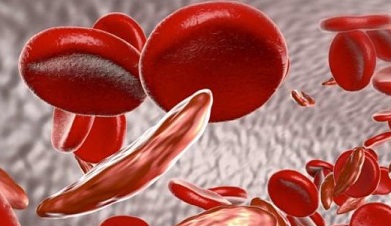COVID-19 News: Mild COVID-19 Can Cause Serious Hematological Issues Such As Pancytopenia, Paroxysmal Nocturnal Hemoglobinuria And Aplastic Anemia!
Nikhil Prasad Fact checked by:Thailand Medical News Team Jan 17, 2024 1 year, 11 months, 1 week, 2 days, 20 hours, 44 minutes ago
COVID-19 News: The global impact of the COVID-19 pandemic has been far-reaching, affecting various organ systems and prompting unprecedented research endeavors. Among the multifaceted consequences of the virus, emerging evidence suggests a potential link between mild COVID-19 cases and the onset of serious hematological issues, including pancytopenia, paroxysmal nocturnal hemoglobinuria (PNH), and aplastic anemia (AA). This
COVID-19 News report seeks to delve into the intricate details of two cases reported by Wayne State University in Detroit, USA, shedding light on the complex interplay between COVID-19 and hematological disorders.
 Even Mild COVID-19 Infections Can Lead To Serious Hematological Issues!
Even Mild COVID-19 Infections Can Lead To Serious Hematological Issues!
Thailand
Medical News has already been warning about the global rise of aplastic anemia incidences following COVID-19 infections or even COVID-19 vaccination.
https://www.thailandmedical.news/news/breaking-covid-19-news-scientists-warn-that-sars-cov-2-infections-and-covid-19-vaccines-can-cause-aplastic-anaemia
However, this new Detroit case study validates that even mild COVID-19 infections (and possibly asymptomatic ones as well!) can lead to the development of aplastic anemia. Many people are unaware of the hematological issues developing in them due to SARS-CoV-2 exposure and often miss getting early treatment with the issues often discovered at a late stages!
Some of the manifestations such as fatigue, tiredness, breathing issues and even cardio-pulmonary issues seen in Long COVID can be attributed to these developing hematological issues!
The Nexus between Viruses and Hematological Disorders
Before delving into the specific cases, it is crucial to appreciate the broader context of the intricate relationship between viral infections and hematological disorders. Past viruses from the Coronaviridae family, such as SARS-CoV-1 and MERS-CoV, have demonstrated associations with various hematological abnormalities. Notably, SARS-CoV-2, the virus responsible for COVID-19, has exhibited a broad spectrum of hematological impacts, ranging from mild leukopenia to severe bone marrow failure.
Aplastic Anemia and Paroxysmal Nocturnal Hemoglobinuria-Unraveling the Complexity
Aplastic anemia, a rare hematologic disorder characterized by pancytopenia due to marrow aplasia, has been recognized for its immune-mediated origins. The dysregulation of the immune system, often triggered by viral infections, can lead to the destruction of hematopoietic stem cells (HSCs). Paroxysmal nocturnal hemoglobinuria (PNH), an acquired disorder of HSCs, is characterized by somatic mutations in the glycosylphosphatidylinositol (GPI) anchor protein synthesis. This mutation results in a deficiency of comple
ment regulatory proteins, leading to unregulated complement-mediated hemolysis. Interestingly, AA and PNH can coexist in the same patient, underscoring the complexity of these hematological disorders.
Case Series - Unveiling the Clinical Narratives
-Case 1 involves a previously healthy 21-year-old male who, after a mild COVID-19 infection, presented with pancytopenia. Further investigation revealed a combination of hemolytic PNH and non-severe aplastic anemia. The patient responded positively to ravulizumab treatment, highlighting the potential efficacy of immunosuppressive therapy.
-Case 2, a 52-year-old female, experienced easy bruising after recovering from mild COVID-19. Diagnosis revealed non-severe aplastic anemia with a non-hemolytic subclinical PNH clone. Interestingly, the patient's response was favorable under observation, emphasizing the variability in disease presentations and responses to treatment.
Unraveling Mechanisms And Global Trends
The discussion section explores the global investigation into the emerging relationship between COVID-19, AA, and PNH. Epidemiological studies and surveys from the UK reveal an increase in AA cases post-COVID-19, underscoring the need for further exploration into the viral triggers leading to marrow failure.
Potential Mechanisms - SARS-CoV-2 and Hematopoietic System
Various proposed mechanisms explain the effects of SARS-CoV-2 on the hematopoietic system. These include direct viral effects on the bone marrow, cytokine storms causing immune-mediated damage, and the direct impact on erythroid precursors. Past research suggests a potential involvement of the Nlrp3–inflammasome complex, linking COVID-19 with hematopoietic stem cell death via pyroptosis.
Immune-Mediated Acquired Aplastic Anemia - Role of Inflammatory Microenvironment
The pro-inflammatory microenvironment generated by COVID-19 is implicated in immune-mediated acquired aplastic anemia. Abnormal autoimmune responses, including cytotoxic T-cells, can induce myelosuppressive cytokines, leading to the cell death of HSCs and progenitor cells. The exact antigens triggering this response and the potential role of SARS-CoV-2 as an inciting antigen remain areas of ongoing research.
PNH Clonal Expansion - A Result of Viral Trigger
PNH clonal expansion, found in nearly 50% of patients with immune-mediated acquired aplastic anemia, may result from intrinsic or extrinsic mechanisms. The variability in PNH clone populations observed in the two cases highlights the need for further exploration into the virus's role in clonal expansion and autoimmune marrow environments.
Treatment Strategies and Longitudinal Follow-Ups
The case study delves into treatment strategies employed in the reported cases and emphasizes the importance of longitudinal follow-ups and larger retrospective studies. Understanding the impact of COVID-19 on overall survival for PNH/AA, especially in the context of concomitant infection, requires further investigation.
Comparative Analysis - Clinical Characteristics and Impact on Disease Trajectory
The cases presented offer a unique opportunity for a comparative analysis of clinical characteristics and the impact on disease trajectory. Case 2, for instance, received two prophylactic COVID-19 vaccines and completed a five-day course of Paxlovid after COVID-19 exposure, while Case 1 received neither. Longitudinal follow-ups and larger retrospective studies are essential to comprehend how COVID-19 infection influences the overall survival for PNH/AA.
Conclusion
In conclusion, the reported cases provide valuable insights into the potential association between mild COVID-19 and serious hematological disorders. While the exact mechanisms remain elusive, the temporal relationship between COVID-19 and AA/PNH warrants further exploration. As the world transitions into the post-pandemic era, comprehensive research into the hematological consequences of COVID-19 becomes imperative for a deeper understanding and effective management of these complex disorders. The intricate interplay between viral infections and hematological abnormalities unveils a novel frontier in medical research, urging the scientific community to continue unraveling the complexities of this evolving landscape.
The case studies were published in the peer reviewed journal: Hematology Reports.
https://www.mdpi.com/2038-8330/16/1/5
For the latest
COVID-19 News, keep on logging to Thailand Medical News.
Read Also:
https://www.thailandmedical.news/news/breaking-news-doctors-warns-that-sars-cov-2-infections-can-cause-pancytopenia-increasing-incidences-sparks-concerns
https://www.thailandmedical.news/news/breaking-covid-19-news-sars-cov-2-also-infects-and-impairs-hematopoietic-stem-cells
https://www.thailandmedical.news/news/covid-19-news-sars-cov-2-impairs-oxygen-delivery-by-altering-red-blood-cell-hematological,-hemorheological-and-oxygen-transport-properties
